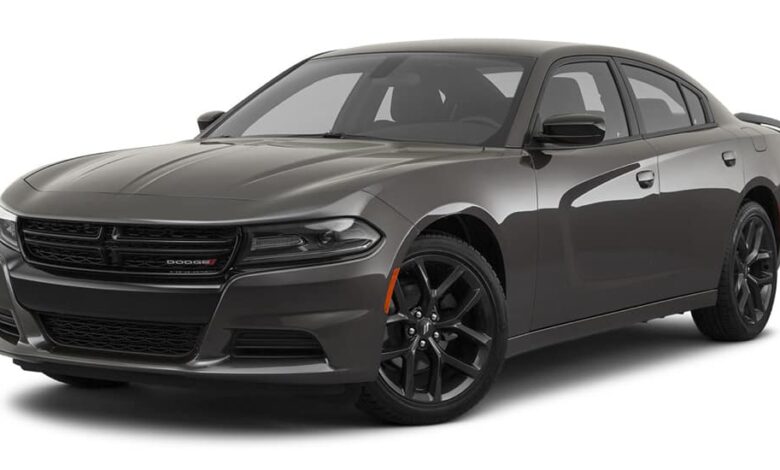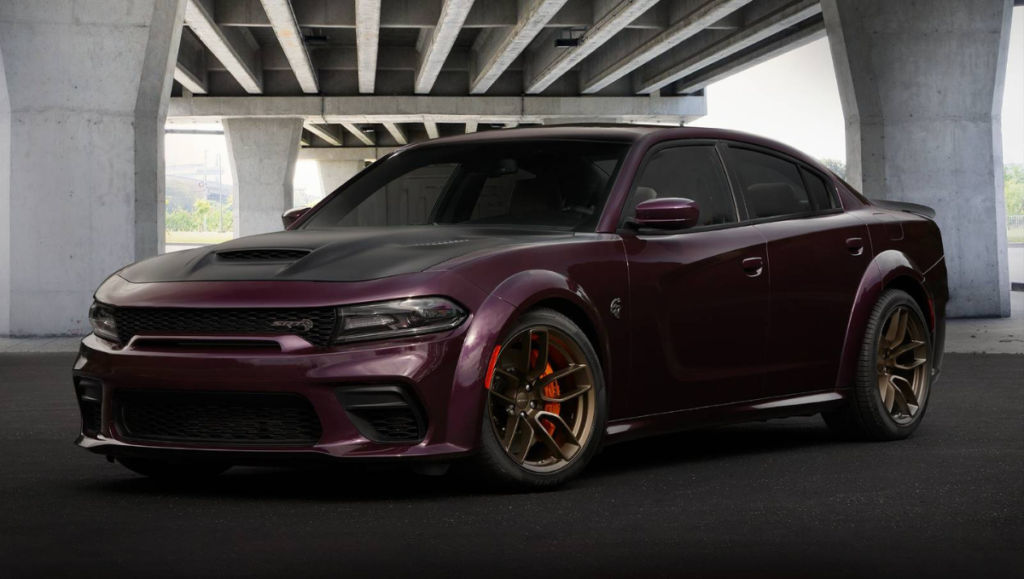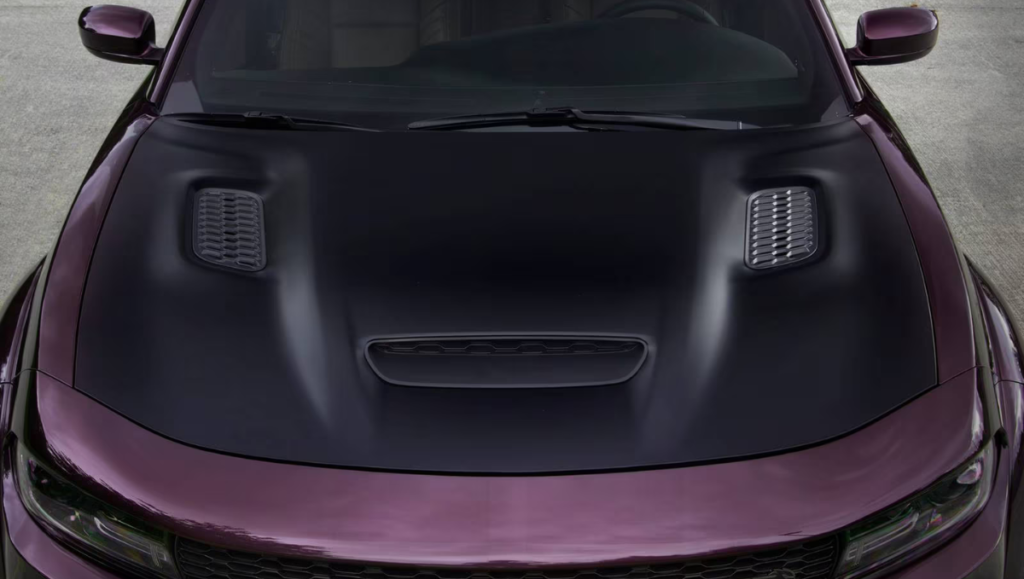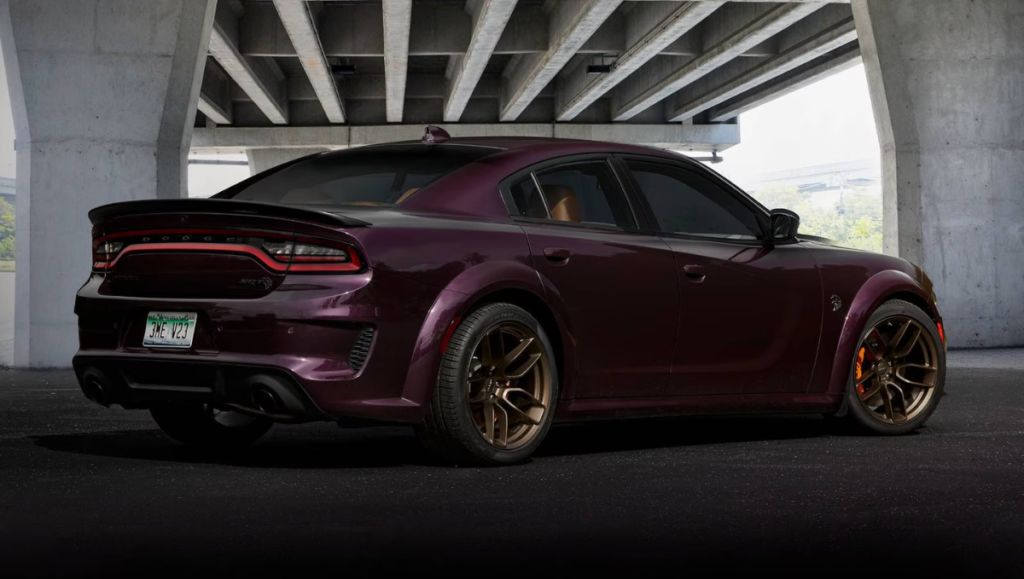
Dodge Charger: Significantly, few vehicles have aged as beautifully and tastefully as the Dodge Charger of the present generation. Even though the large sedan is in its tenth model year, its muscular appearance and lively disposition nevertheless feel timeless. Its familiarity also works to its advantage, as the Charger purposefully emphasizes its retro vibe and ties to the large, quick Mopars of the past. Like Metallica, Master of Puppets may not have brand-new songs, but fans still like it, and the Charger’s amp is as powerful as ever.
2022 is a carryover year for this outdated model, except for the Hellcat Redeye’s arrival last year. However, all trims come with a new deluxe security alarm. While all Charger models play power chords, the Hellcats are closer to the thrash-metal end of the range. At the bottom of the lineup are two V6 versions that rival other family sedans and come with optional all-wheel drive; however, two V8 variants sit between them and the Hellcats. There are four different V8 power levels: 370, 485, 717, and 797 horsepower.
Despite the current rarity of large sedans, the Charger rivals almost every other kind of sedan due to its wide range of variations. While mid-range V6 versions compete with vehicles like the Kia Stinger or the Cadillac CT5, low-end V6 models are an intriguing option to a Toyota Avalon, Honda Accord, or Chrysler 300. The BMW M3 Competition, Mercedes-AMG E53, Porsche Panamera, and CT5-V Blackwing are just a few of the high-test Hellcats competing against vehicles. Even though they are expensive, the Hellcats outperform many other supersedans.

Whether tame or aggressive, the Charger has a roomy cabin with virtually the most significant passenger volume in the class and a 16.5 cubic foot trunk. Thanks to its ample wheelbase and well-damped suspension, it rides just as pleasantly as any other family car. The Hellcats offer a pleasant bonus in that their performance doesn’t require much sacrifice regarding ride quality or practicality, although they feel somewhat stiffer on rough roads. They are just as easy to live within arid regions as the V6 vehicles.
Naturally, there are trade-offs with the car’s age and performance. Although the widebody models’ unique paint jobs and muscle car aesthetics dazzle passersby, the highest trim versions’ materials seem more like they belong in a vehicle costing $80,000. The inside, on the other hand, is a throwback to 2010. The V8s have high fuel costs, but the Hellcats are particularly expensive to insure, and Dodge offers no active safety systems.
Nevertheless, the Charger is unique and thrilling. Even while every model, like vintage muscle vehicles, cannot have every option, this sedan is a buyer’s dream come true for the right person. There are thirteen colour options, nineteen wheel configurations, and many accessories, audio enhancements, and customizing options. The Charger is about to go on a farewell tour, but even old rock stars like to dress up. In 2023, it and the Chrysler 300 will go out of production.
Performance: Dodge Charger
The 3.6-liter V6 engine powering the SXT and GT variants produces 292 horsepower and 300 in the latter. Both have rear-wheel drive; the SXT’s AWD costs an additional $3,600, while the GT’s costs $3,000 more. Despite its size, the Charger is enjoyable to drive and moderately responsive to the driver’s inputs, especially in its more relaxed configurations. However, the steering lacks feedback. Even at this pace, the Charger retains its driving characteristics despite its age.
More speed is undoubtedly available, of course. With its 5.7-liter V8 engine producing 370 horsepower and 395 pound-feet of torque, the Charger R/T can go from zero to sixty miles per hour in less than five seconds. The Scat Pack, a nod to 1960s muscle Dodges, is positioned above that. There are two Scat Packs, each with a 6.4-litre V8 engine that produces 485 horsepower and 475 lb-ft of torque and can reach 60 mph in around 4 seconds. Although the original Scat Pack resembles the smaller Chargers, its broad body is outfitted adequately for crushing power chords.
The widebody Charger is 3.5 inches wider than the standard model. Substantial fender flares and 11-inch-wide wheels with adaptive Bilstein suspension dampers complete the widebody’s unique front and back design. This arrangement is made explicitly for the Hellcat and increases tractability and grip. The fact that it seems cruel doesn’t harm. Large Brembo brakes, a sport-tuned suspension, and other performance extras are also available.
The Hellcats are the first team in the lineup. A 6.2-litre supercharged V8 powers each. If the standard Hellcat’s 717 horsepower and 650 lb-ft of torque isn’t enough, the Redeye variant offers an even greater 797 horsepower and 707 lb torque. Like other V8 Chargers, they only lay rubber and have more fun than track times. Still, this is an astonishing speed for a car that costs less than $100,000.

Fuel Efficiency: Dodge Charger
In any configuration, the Charger is a large, heavy vehicle, yet the primary rear-wheel drive V6 engine gets up to 30 mpg on the interstate, 19 mpg in the city, and 23 mpg overall. Though the other Chargers are far behind, they still fall short of most midsize cars.
All-wheel drive reduces the V6’s fuel efficiency by 2-3 mpg in all categories, while the 6.4-litre V8 needs premium gasoline, and the two non-hellcat V8s yield 19 and 18 mpg combined. In addition to getting only 12 mpg in the city and 15 mpg overall, the Hellcat’s high mileage of 21 mpg on the interstate comes with a $2,100 gas-guzzler fee. While there aren’t many direct rivals, vehicles like the Mercedes-AMG E53, BMW M3 Competition, and Porsche Panamera Turbo all outperform Hellcats. All that is similar is the Cadillac CT5-V Blackwing.
Driver assistance and safety:
The Insurance Institute for Highway Safety (IIHS) gives the Charger good crash scores but only a Marginal rating for its small overlap front driver’s side test and a Poor rating for its headlights. It has an overall rating of five stars from the National Highway Traffic Safety Administration (NHTSA).
While many other midsize sedans come standard with features like lane departure warnings, forward automatic emergency braking, and lane keep assist, the Technology Group must be added for $1,895 to access the many advanced driver-assist and active-safety features that are available but cost extra on almost all trims. The Hellcat vehicles lack adaptive cruise control and forward automated emergency braking at all price points. They have also not undergone crash testing.
Coziness & Space:
Larger vehicles often provide more remarkable inside space than smaller ones, and the Charger is no exception. This sedan is a great travel companion with plenty of room for tall passengers in front and back. In contrast to many other rivals in this class, rear-seat heating is optional, and the front seats can be heated and ventilated. With almost 40 inches of legroom aft, legroom is among the finest in the class, both in front and behind. This place seems like it could accommodate Mötley Crüe’s whole entourage.
There aren’t many full-size alternatives remaining, and most midsize cars have smaller rear ends. The Charger’s cabin volume is on par with the spacious Honda Accord, its sibling vehicles, the Chrysler 300, and the Toyota Avalon. However, compared to performance rivals, its interior is much roomier, especially for rear passengers, than that of the Porsche Panamera or Mercedes-AMG E53.
Infotainment: Dodge Charger
The infotainment screen for SXT versions is 7 inches, but the screen on all other Chargers is 8.4 inches. All are powered by Stellantis’ speedy and easy-to-use UConnect system (although not the most recent version). It has developed into the top infotainment portal in its class and is standardly compatible with Apple CarPlay and Android Auto.
Although not as feature-rich as many high-end cars, the Charger’s systems are simple to use and understand. Wi-Fi and wireless charging are not supported. However, there are two USB ports and an aux jack (conveniently placed in the central storage bin).

Storage & Cargo Space:
Similar to inside capacity, the Charger’s large 16.5 cubic foot trunk is comparable to those of extensive family sedans like the Accord or Avalon, but it falls short of the roomier EVs from Tesla and Lucid. For further mobility, the seats may be folded down and divided 60/40; however, hauling huge goods requires weaving them through the pass-through.
Though it’s neither better nor worse than most other midsize and full-size mainstream-brand sedans, the Charger’s interior offers plenty of space for little items.
Design: Dodge Charger
With an external style that debuted in 2011, the Charger has a classic and well-known appearance that was last modified in 2015. Its bones trace back to the mid-2000s. However, it still looks nice after all this time. The Charger’s intimidating, robust appearance and scalloped sides are reminiscent of its 1968 predecessor, and the lines have held up quite well.
The 2020 edition of the “widebody” version gives it a racing car-like appearance, enabling faster cornering and increased traction. Since many so-called performance vehicles add plastic components to make them seem fast rather than delivering speed, the Charger receives bonus points for partially functionalizing these components.
Sadly, not everything in the automobile has aged nicely. The low-end Chargers are a sea of rental-car black plastic, and the dashboard hasn’t changed since 2011. Higher-end versions provide some colour and fabric enhancements.
Is the 2022 Dodge Charger Worth it?
The Charger is becoming an outdated vehicle, and CEO of Dodge Tim Kuniskis has said that manufacture would stop by 2024. Though they aren’t as feature-rich as more contemporary options like the Accord or Kia K5, the base V6 models are enjoyable despite having fewer frills than the Chrysler 300 or Chevrolet Malibu.
On the other hand, the V8 Chargers provide an alternative.
The best deals are the Scat Pack models, which start at $42,605 and $48,980, respectively, and include a $1,595 destination charge. These are as quick as a sub-$50,000 sedan, thanks to their potent 470 horsepower V8, and the widebody model seems to be a Hellcat from the outside.
The cost of the two Hellcat variants is $88,195 and $79,595 respectively. Although the more expensive Redeye is quick and fun to drive and be seen in, its interiors don’t seem up to that outrageous pricing. These Hellcats are most likely the last of their kind, along with the somewhat more costly Cadillac CT5-V Blackwing; future performance sedans will presumably be powered by electricity.

How Much Does Dodge Charger Insurance Cost?
It costs a lot. The average yearly premium for a 30-year-old female driver with a clean record is $3,689 for the Charger R/T, $4,333 for the Charger Scat Pack, and an eye-watering $5,745 for the Hellcat. In comparison, a Cadillac CT5-V Blackwing costs $4,929, a BMW M3 Competition costs $4,316, an AMG E53 sedan costs $4,110, and more affordable cars like the Hyundai Sonata N Line ($2,576) and Kia Stinger GT2 ($3,063) cost significantly less.
Dodge Charger Generations
Seventh Generation
2011 to Present
The seventh-generation Charger premiered for the 2011 model year with a revised design and interior. Even though the modifications were minor, they were practical and immediately gave the previous model Charger a retro vibe. The 2011 SRT trim level was dropped, while the 2012 V6 got a brand-new eight-speed gearbox to replace the previous five-speed one. In 2012, the 470-horsepower 6.4-litre V8 was combined with throwback designs from the early period of muscle cars to create the Scat Pack trim. The only option for the 2020 Charger Hellcat is the “widebody” version, just a pair of wheel flares to fit the giant wheel and tire package.
Sixth Generation
2006 to 2010
The Charger was reintroduced in 2006, sporting a rear-wheel drive system with a V8 engine that was available after spending almost two decades in exile. This was the first Charger to be known only as a four-door. Several design features, such as the grille and taillamps, alluded to Chargers from the early 1970s.
Fifth Generation
1982 to 1987
After four years away, the Charger brought back a whole new beast. Built on the foundation of the Dodge Omni compact, the fifth-generation Charger included a front-wheel drive system and a four-cylinder engine, all housed in a compact hatchback body style. A Shelby variant came with sporty aesthetics and a negligible horsepower increase.
Fourth Generation
1975 to 1978
The fourth-generation Charger prioritized personal luxury above performance, primarily motivated by stricter pollution rules and the need for unleaded gasoline. While it shared many design cues with the Chrysler Cordoba, this Charger didn’t have the same impact as earlier iterations.
Third Generation
1971 to 1974
With its sleek, contemporary design and sense of personal luxury, the third-generation Charger kept up its wide range of trim and engine choices. The long hood/short trunk design was an excellent fit for the style of the 1970s.
Second Generation
1968 to 1970
Like its predecessor, the second generation Charger only lasted two model years. The second-generation Charger left a lasting impression on the public. Even with its short manufacturing run, it became one of the most identifiable and sought-after models in the car’s history.
First Generation
1966 to 1967
The first generation Dodge Charger was introduced in 1966 and was limited to only two model years. It was distinguished by its immediately identifiable two-door fastback body design. Among the available engines was Chrysler’s renowned 426 Hemi V8.
Verdict
The 2022 Dodge Charger is as loud, flashy, quick, and stylish as ever, while it seems older on the outside. Essentially a large, conventional rear-drive family vehicle, the basic entry-level V6 model is outdated, and the interior is archaic. Still, even that version is enjoyable to drive and has all-wheel drive. With four V8 engines producing between 370 and 797 horsepower, the potential for Porsche Panamera-level performance, and widebody muscular machine aesthetics, things get when you start checking off option boxes. But the Charger has no built-in safety systems, and the most expensive models may cost up to $80,000.




